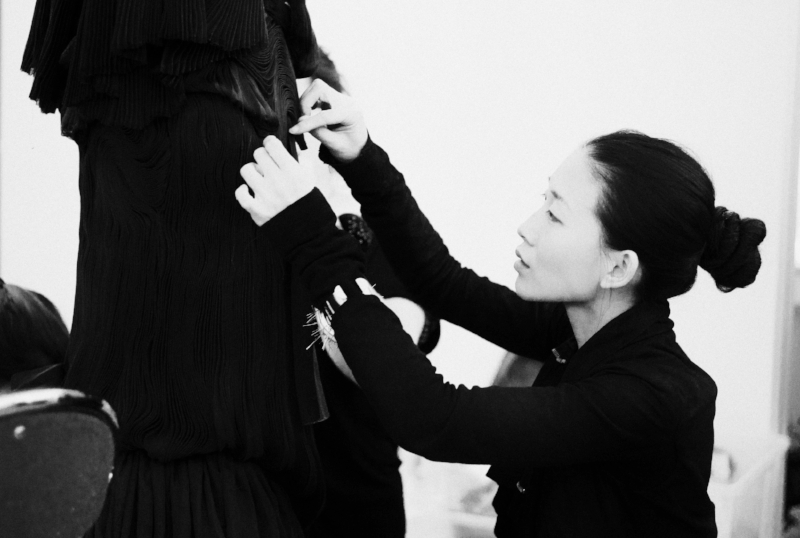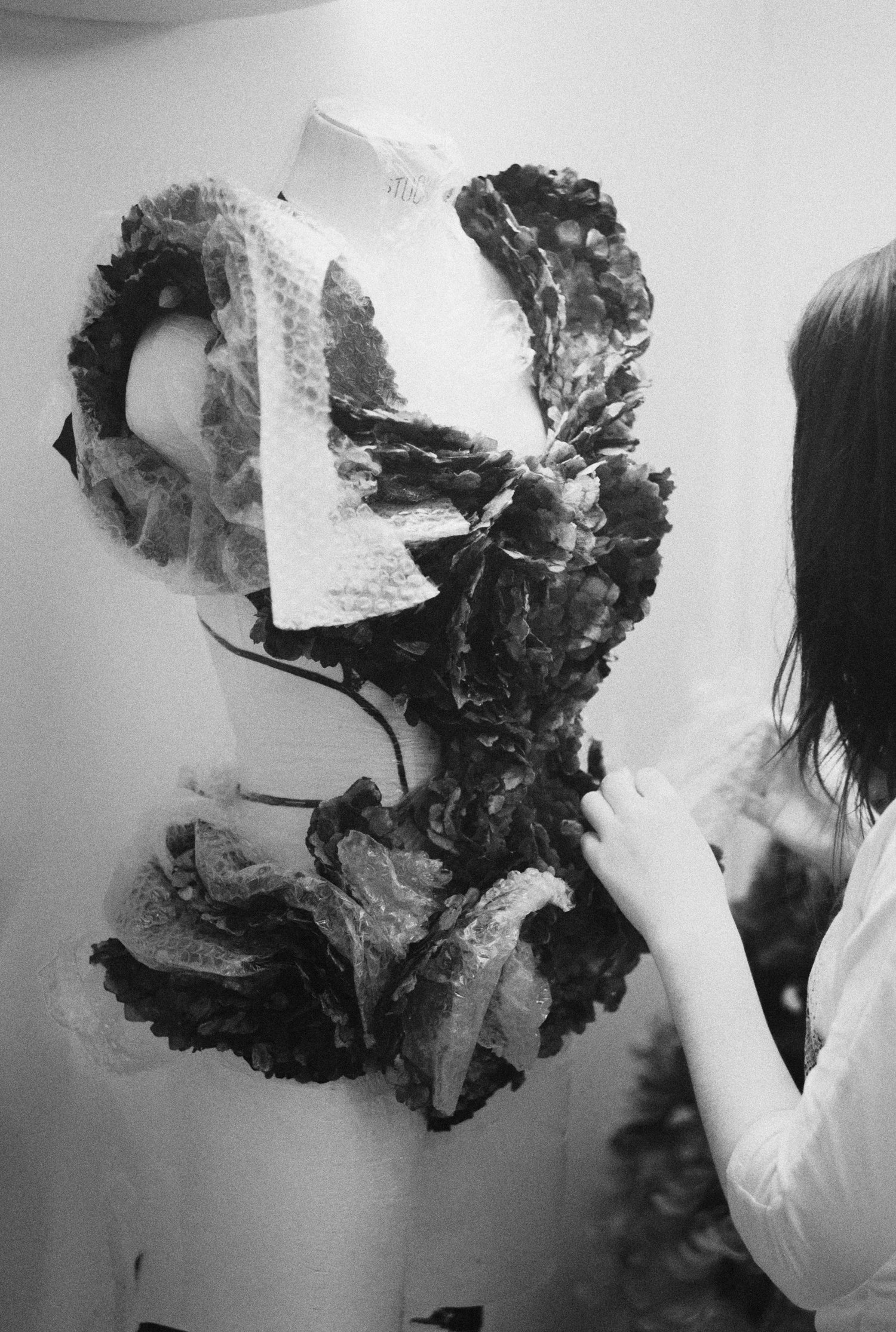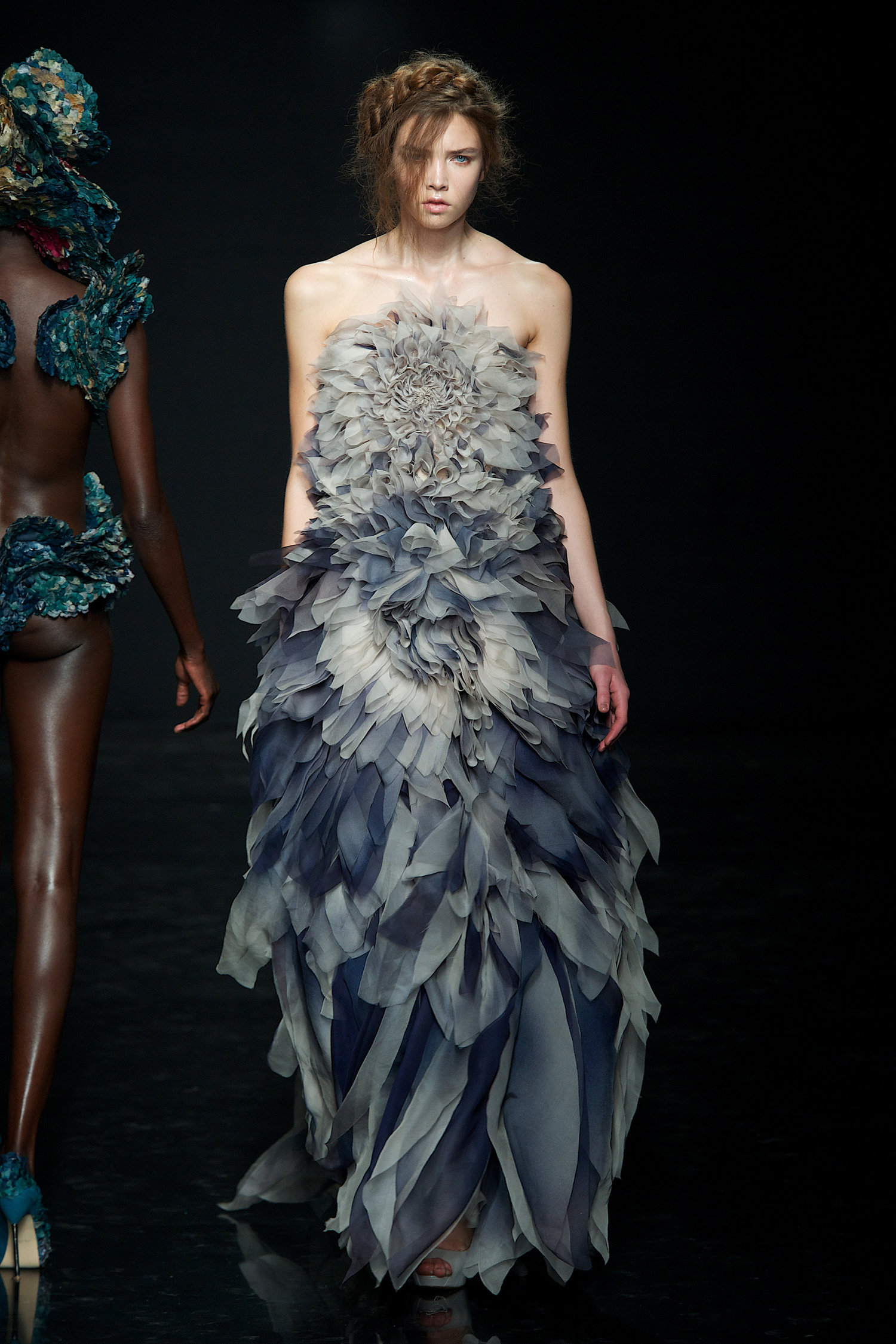An Interview with Yiqing Yin

PUSHING BOUNDARIES With a raft of prizes and a nearly immediate invite to participate in the official couture calendar, Yiqing Yin is taking the Parisian couture scene by storm.
In the short time since she launched her first collection in 2010, Yinqing Yin has quickly found success. She was invited to present her first line, “Exile,” at the prestigious Hyères International Festival, then successively won the Grand Prize of Creation from the City of Paris and the Andam Prize for First Collections. Those early creations were later displayed in the windows of the French Ministère de la Culture and at the Théâtre National de Chaillot in Paris.
Last year, she was selected by Vogue France as one of eight young designers to watch and the magazine then curated an exhibition of her work at the Hôtel de Crillon during the Women’s Fashion week. She presented her second collection, Ouvrir Venus, and her first full runway show in July 2011 and was subsequently invited by the Chambre Syndicale de la Haute Couture to present on the official Haute Couture calendar this year as a guest member. The positive response to her first official Couture show in January was so strong, she’s getting ready to launch this fall a ready to wear line that will be available at a few select stores around the world including Joyce in Hong Kong and Saks 5th Avenue in New York.
From the start, her aim has been to create a garment that protects and reinforces, being at the same time a supple armour and a second skin.
“For me, couture is really a platform for creative freedom, expression, experimentation, which I really like because I’ve always kept a very sculptural approach to my work. In a way, it provides a bigger space for this kind of expression, pushing the limit for art, emotion and story-telling. You can also push the boundaries of the material you use, and that really attracts me,” explains the 27-year-old who was born in Beijing but raised in France and Australia.
Her first 2010 collection used silk in many forms, from chiffon, organza, gazar to silk mixed with cotton linen, and presented her very distinctive mille-feuille pleating that has now recurred in her later collections.
“I wanted to give more dynamic potential to a flat surface and when you pleat you enrich and at the same time destroy. You build new organic shapes. It’s an exploration of potential volume as well as graphical lines,” she explains, “what I like about this pleating approach is that it’s a very instinctive way of working; you always get surprises, you can never control everything or predict anything final ... you see something appear and you go from there. There is an element of luck and accident.”
“I look at the garment as a supple armour. I like the paradox of sculpting an armour which is in people’s mind something strong and rigid, but I sculpt it with something that is very light and fragile like liquid organza. The result is something that looks like and feels like an armour, but I’m actually sculpting void and air. I like this contrast between something solid and something fragile and ethereal,” she adds.
For her second collection, Yin started to experiment with new materials and fabrics like furs and crystals. “I got really lucky for a young designer to get really good sponsors with Saga Fur and Swarovski. They give me as much as I want to help me realize my vision and for the prototype it’s free so all I have to do is a very creative design,” she says.
Ouvrir Venus was inspired by the human anatomy and showed a somewhat violent yet ethereal side with dresses featuring diagonal slashes and draping effects. “It was really an excuse to explore the female anatomy to its core and bring an element of layers, revealing the inside, opposing the inside and outside,” she says.
Her Fall-Winter 2013 collection, titled Spring of Nüwa, is inspired by nature and its elements and Yin looked for inspiration to the Chinese legend of Nüwa, the goddess who moulded the first men out of clay.
“I like the idea of sculpture, the sensuality of the image of clay, water mixing together. There was something very naïve and pure about it, the idea of birth, the origin. The collection is about this idea of freshness and lightness,” she says.
On her mood board in her atelier are photographs of Karl Blossfeldt (1865 –1932), best known for his black and white close-up photographs of plants and living things that resemble stone sculptures.
Her latest collection re-imagines the female form in a world of mineral and vegetable composition with a colour palette mainly dominated by shades of grey with small splashes of colour, particularly red.
Her micro pleats, of which there are plenty, are really, she says, a modern reinterpretation of smocking, an old embroidery technique in which the fabric is gathered with thread or embroidery floss, then embroidered with decorative stitches to hold the gathers in place. They swirl around the midriff or in the back in an extremely controlled manner before being suddenly let free. “I like the rupture point between the two, trying to find the balance between them is the tricky part,” she notes.
For this collection, the designer gave a lot of attention to the back of her garments, highlighting the space between the shoulder blades either with feathers, or with knots of twisted silk running as a heavy rope from the nape of the neck to the lower back.
She also created her first fabric print, an abstract floral pattern she drew and used in a light chiffon and crepe cocktail dress that plays on layers and transparency, and she continues to use other new materials, such as Alcantara — a new Italian fabric which resembles Suede— used in a bright red dress with laser cut motifs, real flower petals each individually treated with resin, then varnished before embroidered, and a new Swiss polyester fabric that looks like liquid organza and changes colour when the wearer moves.
Her final piece was an amazing crinoline cage structure covered with feathers of pheasant, peacock, goose, There are also ostrich plumes that have been burnt with acid to give it a wet effect. “I think it’s quite perverse making a cage out of bird,” she laughs.
Yin says she sees the Yiqing Yin woman as “full of paradox, complex, strong willed, a woman with a very sensual side, but also a very masculine one.”
“I don’t design for myself. But the attitude that I imagine is quite close to the way I live my life. Above all she’s someone who is not afraid to assert her singularity, to be different and to communicate something about her identity through her wardrobe and appearance. She can be quite playful. She’s sensual, erotic but not sexy and she chooses to veil or unveil parts of her body,” she explains.
Having set up her own label only two years ago, against the advice of many people around her who countered she was still too young and should first gain experience somewhere else, Yin is showing she is as strong willed as the woman she’s designing for. “I may be immature and lack experience, but I make up for it in dynamism, energy and will power,” she laughs.
First published in Couture by Designaré – Vol 3 (September 2012)












